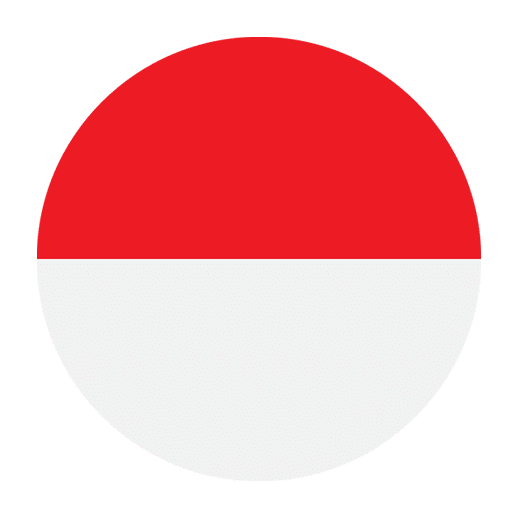Learning a new language is an exciting adventure, and understanding the intricacies of punctuation is a vital part of mastering it. Indonesian, known for its straightforward grammar and relatively simple structure, still has its unique punctuation rules that learners need to grasp. In this article, we will delve into Indonesian punctuation and highlight the essential aspects that will help you write and read Indonesian with confidence.
Understanding the Basics of Indonesian Punctuation
Punctuation in Indonesian is quite similar to that in English, but there are some differences and unique uses that are important to note. Let’s go through the most common punctuation marks and their functions in Indonesian.
1. Period (Titik)
In Indonesian, the period (titik) is used much like in English. It marks the end of a declarative or imperative sentence.
Example:
– Saya suka makan nasi. (I like to eat rice.)
– Tolong buka pintu. (Please open the door.)
Additionally, periods are used in abbreviations:
– Bpk. (Bapak – Mr.)
– Dr. (Dokter – Doctor)
2. Comma (Koma)
The comma (koma) in Indonesian is used to separate elements in a series, to set off clauses, and to provide clarity, much like in English.
Example:
– Saya membeli apel, jeruk, dan pisang. (I bought apples, oranges, and bananas.)
– Setelah makan, saya pergi tidur. (After eating, I went to sleep.)
In compound sentences, commas are used to separate independent clauses that are joined by coordinating conjunctions such as “dan” (and), “tetapi” (but), and “atau” (or).
Example:
– Saya ingin pergi ke pantai, tetapi cuacanya buruk. (I want to go to the beach, but the weather is bad.)
3. Semicolon (Titik Koma)
The semicolon (titik koma) is used to link closely related independent clauses. It is less common in Indonesian than in English but is still used to avoid confusion.
Example:
– Saya membeli buku baru; saya akan membacanya malam ini. (I bought a new book; I will read it tonight.)
4. Colon (Titik Dua)
The colon (titik dua) is used to introduce lists, explanations, or quotations.
Example:
– Saya punya tiga hobi: membaca, menulis, dan berlari. (I have three hobbies: reading, writing, and running.)
– Dia berkata: “Saya tidak bisa datang besok.” (He said: “I can’t come tomorrow.”)
5. Question Mark (Tanda Tanya)
The question mark (tanda tanya) is used at the end of an interrogative sentence.
Example:
– Apakah kamu suka kopi? (Do you like coffee?)
– Di mana kamu tinggal? (Where do you live?)
6. Exclamation Mark (Tanda Seru)
The exclamation mark (tanda seru) is used to express strong emotion or command.
Example:
– Lihat! (Look!)
– Hati-hati! (Be careful!)
Quotation Marks (Tanda Petik)
Quotation marks (tanda petik) in Indonesian are used to enclose direct speech or quotations, similar to English. However, Indonesian uses both single (‘ ‘) and double (” “) quotation marks, with specific rules for each.
1. Single Quotation Marks
Single quotation marks are used to enclose direct speech or quotations within a larger quotation.
Example:
– Dia berkata, “Ibu saya selalu bilang, ‘Belajar yang rajin.'”(He said, “My mother always says, ‘Study diligently.'”)
2. Double Quotation Marks
Double quotation marks are used to enclose direct speech, titles of short works, or to highlight a specific word or phrase.
Example:
– “Saya akan pergi besok,” kata Rina. (“I will go tomorrow,” said Rina.)
– Saya membaca cerita pendek “Si Kancil.” (I read the short story “The Mouse Deer.”)
Parentheses (Tanda Kurung)
Parentheses (tanda kurung) are used to insert additional information or an aside into a sentence.
Example:
– Saya akan pergi ke Jakarta (ibu kota Indonesia) minggu depan. (I will go to Jakarta (the capital of Indonesia) next week.)
Apostrophe (Apostrof)
The apostrophe (apostrof) in Indonesian is used to indicate possession or to contract certain words, much like in English.
Example:
– Buku Ani (Ani’s book)
– Tidak → ‘tak (not)
Ellipsis (Tanda Elipsis)
The ellipsis (tanda elipsis) is used to indicate the omission of words or a trailing off of thought. It consists of three periods.
Example:
– Saya tidak tahu… mungkin besok. (I don’t know… maybe tomorrow.)
Dash (Tanda Pisah)
The dash (tanda pisah) is used to insert a break in a sentence or to set off a parenthetical element with more emphasis than parentheses.
Example:
– Saya ingin pergi ke Bali—tempat yang sangat indah. (I want to go to Bali—a very beautiful place.)
Hyphen (Tanda Hubung)
The hyphen (tanda hubung) is used to join words or parts of words, especially in compound words and numbers.
Example:
– Anak-anak (children)
– Lima-puluh (fifty)
Capitalization Rules
In addition to punctuation, understanding capitalization is crucial for proper writing in Indonesian. Indonesian capitalization rules are quite similar to English, with some specific considerations.
1. Capitalize the First Word of a Sentence
The first word of every sentence is capitalized.
Example:
– Saya suka membaca. (I like reading.)
2. Capitalize Proper Nouns
Proper nouns, including names of people, places, and specific things, are capitalized.
Example:
– Jakarta, Indonesia
– Budi, Siti
3. Titles and Headings
The first word of titles and headings is capitalized, as well as any proper nouns within them.
Example:
– Mengunjungi Bali (Visiting Bali)
– Sejarah Indonesia (History of Indonesia)
4. Days, Months, and Holidays
Names of days, months, and holidays are capitalized.
Example:
– Senin (Monday)
– Januari (January)
– Hari Natal (Christmas Day)
Common Pitfalls and Tips for Mastery
As with any language, there are common pitfalls that learners might encounter when dealing with Indonesian punctuation. Here are a few tips to help you avoid them:
1. Overusing Commas
While commas are essential for clarity, overusing them can clutter your writing. Make sure to use commas where necessary but avoid inserting them unnecessarily.
2. Misplacing Quotation Marks
Ensure that quotation marks are placed correctly to avoid confusion. Remember that single quotation marks are used within double quotation marks for nested quotations.
3. Incorrect Use of Apostrophes
Be mindful of the correct use of apostrophes to indicate possession or contraction. Misusing them can change the meaning of your sentences.
4. Inconsistent Capitalization
Consistent capitalization is crucial for readability. Pay attention to proper nouns, titles, and the beginning of sentences to maintain proper capitalization.
5. Practice with Examples
The best way to master punctuation is through practice. Read Indonesian texts to see how punctuation is used in context, and practice writing your sentences, paying close attention to punctuation rules.
Conclusion
Understanding Indonesian punctuation is an essential step in becoming proficient in the language. While many punctuation rules align with those of English, there are unique aspects and specific rules that require attention. By familiarizing yourself with these rules and practicing regularly, you can enhance your writing and reading skills in Indonesian. Remember to stay patient and persistent, and enjoy the journey of mastering this beautiful language. Happy learning!

